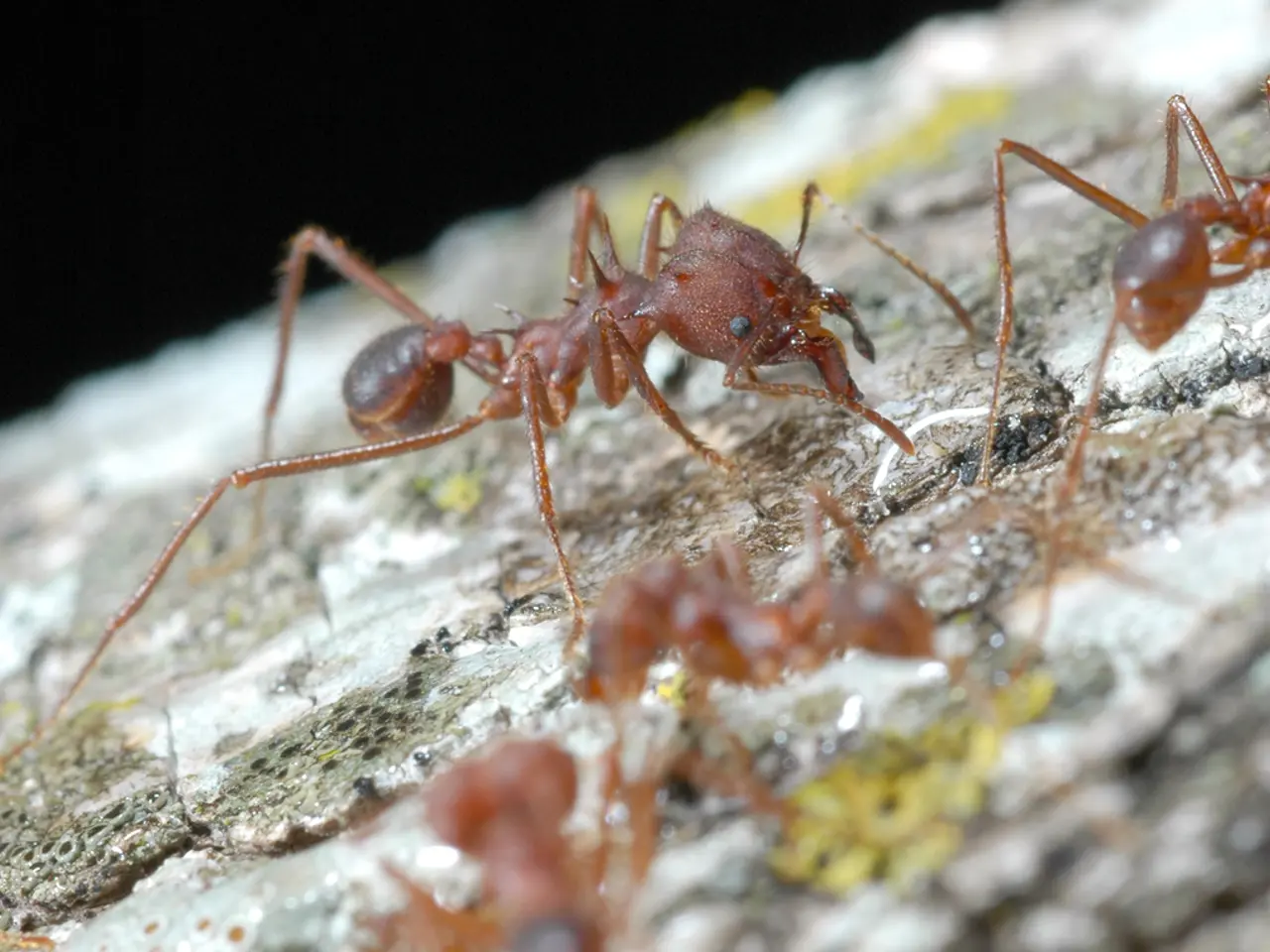Ant species wreaking havoc at nearby picnics
In the vast expanse of North America, various ant species thrive, each with its unique characteristics and behaviors. Here's a rundown of some of the most common ants you might encounter.
The Argentine ant (Linepithema humile), dark brown in colour and often seen in large numbers, can nest in diverse environments such as tree limbs and wall voids, making them particularly invasive. They form supercolonies, displacing native ant species in some regions. For effective control, bait is recommended, targeting worker ants and queens.
Fire ants (Solenopsis invicta) are another common species, known for their painful sting. These aggressive ants build large nests in open areas like lawns and fields. Professional pest control service is often needed for serious infestations.
Carpenter ants (various species) are larger ants, usually dark brown to black, known for nesting in decaying wood or tree stumps. Unlike termites, they do not eat wood but excavate it to build ant colonies. If left unchecked, they can cause structural damage. Control can be done using bait stations or by calling a pest control professional.
Odorous house ants (Tapinoma sessile) are a common indoor ant, often nesting near heat and moisture sources. They release a rotten coconut smell when crushed. Control can be achieved by sealing food sources and using ant baits.
Pavement ants (Tetramorium caespitum) are small ants commonly found under sidewalks, driveways, and patios. Identifying them involves looking for slow-moving worker ants near food containers or window frames.
Thief ants (Solidobalius) are sometimes called grease ants because they're attracted to greasy food. They often live near other ant colonies, stealing food and brood. Because they can be difficult to spot, bait-based pest control is usually necessary.
Acrobat ants (Crematogaster) are small, heart-shaped ants that can bite when threatened. They often nest in rotting wood or tree branches.
Leaf cutter ants (Atta) have highly complex social systems and advanced fungus-farming behavior. They are famous for their farming behavior in Central and South America.
Pharaoh ants (Monomorium pharaonis) are tiny, yellowish ants that form large colonies with one or more queens. They are commonly found in hospitals, apartment buildings, and homes, nesting in hidden spaces like wall voids. Because their colonies can split when stressed, using bait is better than sprays for effective control.
Crazy ants (Paratrechina longicornis) are reddish-brown to black and often nest in wall voids, leaf litter, or under stones. They are known for displacing fire ants in some regions.
It's essential to understand that field ants build mounds in lawns and fields and don't nest in wood, so they don't pose a risk of structural damage. On the other hand, black ants, sometimes used as a catchall term, are usually small, dark ants found indoors and outdoors. Proper identification is crucial for effective treatment.
In conclusion, each ant species presents its unique challenges and requires specific strategies for control. Knowing the characteristics of these common ants can help you manage infestations effectively. Always remember that proper identification is key to successful pest control.
Read also:
- Impact of Alcohol on the Human Body: Nine Aspects of Health Alteration Due to Alcohol Consumption
- Understanding the Concept of Obesity
- Tough choices on August 13, 2025 for those born under Aquarius? Consider the advantages and disadvantages to gain guidance
- Microbiome's Impact on Emotional States, Judgement, and Mental Health Conditions







